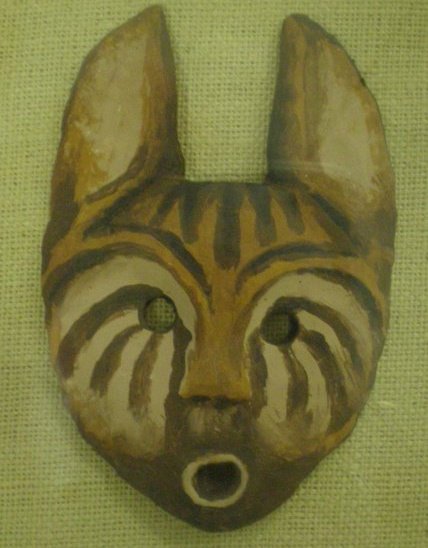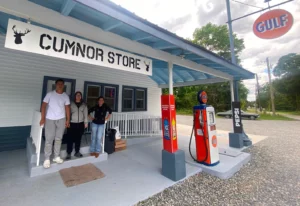 Israel does it. Virginia does it. Britain does it. Italy does it. They even do it on Marco Island, where old native Calusa artifacts helps to define an image of the city, and the Southwest Florida kingdom that they used to rule.
Israel does it. Virginia does it. Britain does it. Italy does it. They even do it on Marco Island, where old native Calusa artifacts helps to define an image of the city, and the Southwest Florida kingdom that they used to rule.
It’s archeology, and it’s a very under-used weapon in tourism and place-branding.
Most times, tourism officials are wrongly obsessed with building convention centers and hotels. They think they need to meet with advertising folks, and have they little time for odd people in worn clothes who dig up things.
Many people who are seemingly for “economic development” see archeology as something that slows down large construction projects. That can be true in some cases, but the reality is that prudent developers always check first with a county planning department before they buy a property. It’s called due diligence, and making a few quick calls before you sign a deal is prudent, as you don’t want to be building a new hotel on an old native American burial place.
Newness Never Lasts
A focus on newness has most local tourism promoters thinking about the wrong things, and making friends with the wrong people. A new convention hall at a new hotel can only be “new” for about 6 months or so. By the third or fourth year, it’s old stuff. Yes, a nice convention hall is expected, but it does nothing to make your destination more interesting over the long term.
But sophisticated destinations understand something different. These destinations see a connection between history and culture, and will often promote digs as part of the tourism product. For instance, the PR agency Weill sends out regular press releases on finds in Israel. A new street? Send a release! Some Roman bit? Send another?
Here’s how Israel (photo above of City of David archaeology dig in Jerusalem) does it:
New York – February 18, 2010: Flagstones from a 1,500-year-old street were discovered this month during an excavation in the Old City of Jerusalem.
The ancient street follows the same course as the present-day David Street in the Old City and provides evidence supporting the Madaba Map–a 1,400-year-old mosaic map which depicted the Land of Israel in the Byzantine period and the entrance to Jerusalem from the west that led to a single, central thoroughfare on that side of the city. The mosaic is believed to be from the largest bustling street during the Christian rule of Jerusalem.
“We discovered the flagstones, more than a meter long, paved the road at a depth of about 14 feet below street level,” says Dr. Ofer Sion, Excavation Director, Israel Antiquities Authority.
Now, you say. We don’t have artifacts of Biblical proportions in my little corner of the world. This Does Not Apply.
Not true. Even modest digs are interesting to the public. And realistically, most parts of the world have native cultures that are thousands of years old lying beneath.
Archaeology does something long-term for your destination. It builds interest in your place, and gives your region a narrative, sometimes thousands of years old. A few reasons why archaeology is so potent for tourism:
- It happens over time. Finds are never quite done. They keep unearthing things. Even small items tend to build interest in other things. The media never tires of finds. Yes, it’s exciting when gold trinkets and such are found, but the constant dribble of any bit of modest news helps keep your destination in the press, both in local, state and international circles.
- It touches all groups. What you find is always across demographics and races. Findings are almost always subversive.
- The process itself generates economic activity. While no one would think a dig would be as big an employer as a factory, the dig is almost always a low-cost investment. The dig itself generates room visits, purchases and such. The other thing; digs almost always come before large road projects, etc., so they help promote what happens after the dig.
- It lays a foundation for community support for culture and history. The people who care about culture and history are the people who support the sorts of amenities that make a destination interesting.
- It attracts academic interest in an area. A dig is always of interest to areas larger than your immediate MSA. Very few digs are just interesting to a local community; they are written up in journals and such, and become part of the international academic community. This permanent attention lives on forever.
- Youth are always interested in archaeology. The local youth can always be a part of the project through school curriculum. Almost all digs fit into some standards of learning; getting the youth of a community interested in its past ultimately gets them interested in the future.
- It aligns your tourism office with the “right” local folks. The sorts of folks who show up at local historical society meetings and such are usually the old guard of a community. Many CVB and TDC officials move from place to place. They are often in a disconnect, and then wonder why they are undermined. But historical societies and the like are an easy way to connect with these folks who can either help you, or undermine you.
- Historical writing and research precedes literature. Getting a destination mentioned in books and literature is important to building interest in a community. The only way writers know the interesting facts about a place is through research.
- It helps with search engines. The information gleaned from any dig should be posted online. The information is never just about the dig, though; it always relates to the whole geographic area and its story. These keywords are valuable in building the online “story” of your destination.
- The end is never in sight. The interest in one part of your destination helps build interest in other pieces of your destination.









Hello cousin! Your thoughts expressed in this article are wonderful and useful for us down here in Coastal North Carolina. Here we are just beginning to understand and reveal our true history of the region, which may very well be the “Jamestown” of NC. Locally we have the first town in NC, Bath. Bath was the first customs house, true home of Blackbeard the pirate, founded by John Lawson, famous early 18th century naturalist, home of 16th century indian village of Secotan, and probably the destiny site for the descendants of The Lost Colony from Roanoke Island. We also claim the NC equivalent to Robert King Carter, John Gray Blount, who probably owned more land, and was a very successful shipping merchant as well.
I have taken the liberty to share your article with the folks leading the charge in tourism development here. On another note, I was sorry to see your great legislative efforts come to an end. But, I am sure your new endeavors will be just as successful! On a last note, I discovered a few years ago I am the 6th great grand son of RKC and, now active with The Carter Society. We are coming to your area to celebrate of founding next year for a long weekend. Please say hello to your folks, including extended family, which I have not seen in way too long.
Good fortune to you!
Bill
Ann..thanks for the Egypt. I bet lots of foreign exchange….
By the way, I urge readers to click on your name to see you website. Good stuff!
Good points, and well summarized. In your intro paragraph, you definitely forgot ‘Egypt does it’. (I often wonder how much of their national budget comes from tourism or tourism related industries.)